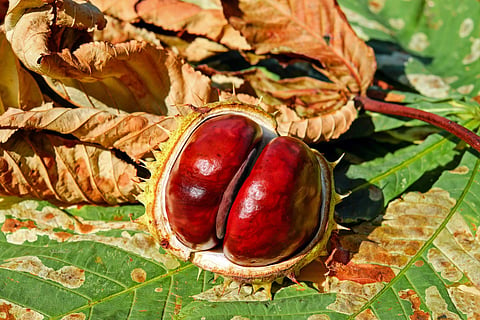

Earthy, nutty, crispy, crunchy, are what water chestnuts stand for. Known as singara in north India, paniphal in the east, and mullu kombu beeja and kubyakam in the south, water chestnuts remind most of us of our childhood when we used to run after fruit vendors selling them in their baskets.
Today, this aquatic vegetable (often confused with a nut) remains as simple as ever but has found its patrons in the chef fraternity for its beautiful flavour and texture.
High in detoxifying properties and antioxidants, water chestnuts are packed with health benefits, hence induce a lot of goodness in all kinds of dishes.
Moreover, due to their unique texture, chefs love to create offbeat dishes, making them an extremely versatile ingredient.
“Freshwater chestnuts have a refreshing crispness and delicate sweetness which is unique in enhancing the flavour of any dish where we use them,” says Saurabh Udinia, Head Chef, Farzi Café and Masala Library under Massive Restaurants umbrella. He offers a dish called Water Chestnut and Amaranth Sphere, which is a unique pairing of two nutritious ingredients—water chestnuts and amaranth seeds.
“Generally koftas are very rich and heavy in calories, hence we thought about making a lighter kofta loaded with goodness.
Water chestnut gives this sphere a unique crunchy and refreshing bite,” says chef Udinia.
At Soy Soi in Gurugram, they serve up a popular Tab Thim Grob, a traditional Thai dessert of tapioca jellied chestnut.
Chef Peter Tseng says, “At Soy Soi, we use this culinary gem in our dimsum as filling, stir-fries, as well as in desserts. One of our popular and crowd favourite is Tab Thim Grob in which the jellied chestnuts appear like red rubies, and the dish looks beautiful topped with crushed ice, sweet coconut cream and ripe jackfruit, making it the go-to dessert in all seasons.”
Tarachand Paneer Bhurji Bao at Prankster in Gurugram is a dish loaded with the goodness of freshwater chestnuts.
Chef Harangad Singh says, “Low in calories and high in nutrition, these crunchy minions are my best friends these days. Their sweet and nuttier taste, which sustains its crunch even after cooking, has made me their fan. I like to add them in dimsums for their crunchiness and they find place in my desserts too. I use them as a great fusion ingredient. They give great texture with an added kick to create something innovative with it.”
Likewise, Jyotika Malik, developmental chef for the Olive Group of Restaurants and Olly, takes full advantage of the water chestnut’s good properties.
“There is no dearth of possibilities when it comes to playing with the texture and flavours of water chestnut, more so for a healthy dish,” says Jyotika.
She likes to prepare The Goodness Bowl, which she describes as “a bowl of all things good for you. It has plenty of various seeds, edamame, quinoa, sweet potatoes and loads of water chestnuts. I give a very flavoursome tahini dressing and it’s 100 per cent gluten-free and vegan.”
Incidentally, for chef Jyotika, water chestnuts hold a special place as she was very fond of them in her childhood.
“Water chestnuts are my personal favourite,” she adds with a smile.
“It is a very underutilised ingredient in our cuisine. Low in calories and high in antioxidants, they are a perfect fit in the goodness bowl as everything comes together beautifully. It is an integral and defining part of our winter menu,” she concludes.